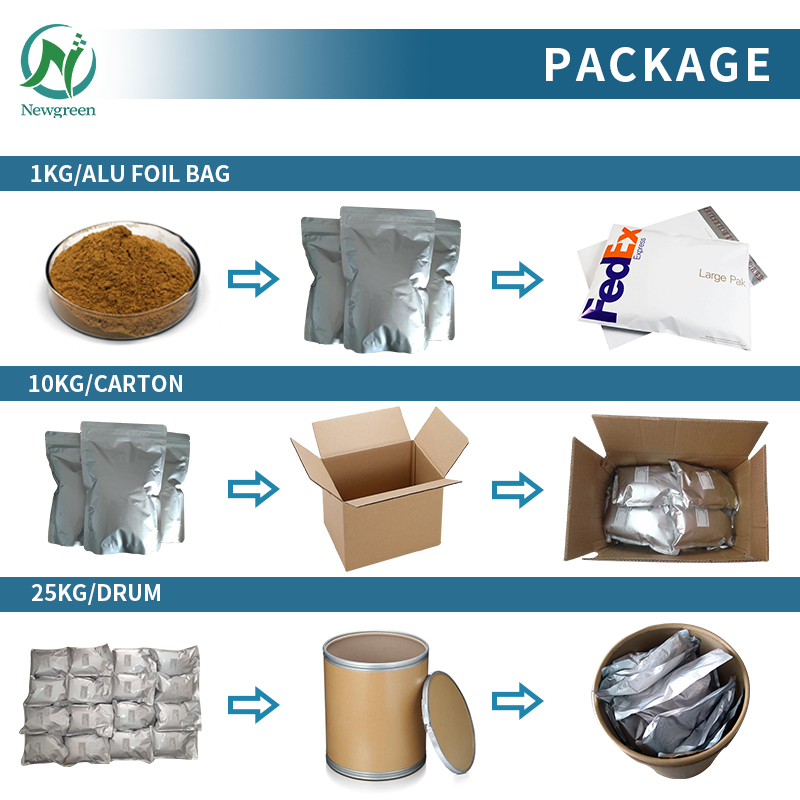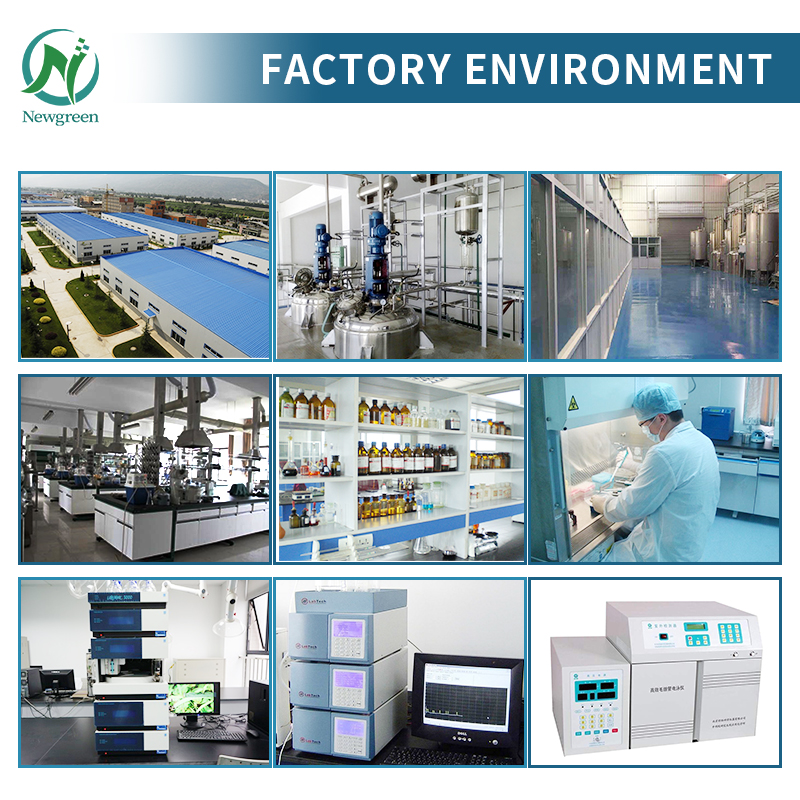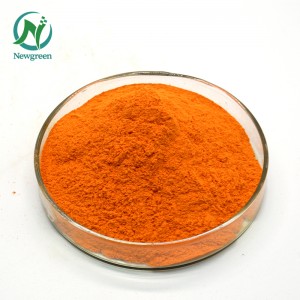Carrageenan Manufacturer Newgreen Carrageenan Supplement

Product Description
Carrageenan, a polysaccharide extracted from red algae, has a long history of use in Asia and Europe, which was first commercialized in the early 19th century as a powder product. Carrageenan was initially introduced as a stabilizer in ice creams and chocolate milk before expanding into other products such as pudding, condensed milk, and toothpaste in the 1950’s (Hotchkiss et al., 2016). Due to its unique properties and potential functions, the use of carrageenan has been widely explored in various applications.
COA
| Items | Specifications | Results |
| Appearance | White Powder | White Powder |
| Assay | 99% | Pass |
| Odor | None | None |
| Loose Density(g/ml) | ≥0.2 | 0.26 |
| Loss on Drying | ≤8.0% | 4.51% |
| Residue on Ignition | ≤2.0% | 0.32% |
| PH | 5.0-7.5 | 6.3 |
| Average molecular weight | <1000 | 890 |
| Heavy Metals(Pb) | ≤1PPM | Pass |
| As | ≤0.5PPM | Pass |
| Hg | ≤1PPM | Pass |
| Bacterial Count | ≤1000cfu/g | Pass |
| Colon Bacillus | ≤30MPN/100g | Pass |
| Yeast & Mold | ≤50cfu/g | Pass |
| Pathogenic Bacteria | Negative | Negative |
| Conclusion | Conform with specification | |
| Shelf life | 2 years when properly stored | |
Funtion
carrageenan has been used in wide variety of food products such as meat, dairy, and flour-based products, and their mechanisms and functions in these matrices have also been studied. With the emergence of novel food technologies, carrageenan's potential applications have been extensively explored alongside, including encapsulation, edible films/coatings, plant-based analogs, and 3D/4D printing. As the food technology evolves, the required functions of food ingredients have changed, and carrageenan is being investigated for its role in these new areas. However, there are many similarities in the use of carrageenan in both classic and emerging applications, and understanding the underlying principles of carrageenan will lead to a proper use of carrageenan in emerging food products. This review focuses on the potential of carrageenan as a food ingredient in these emerging technologies mainly based on papers published within the past five years, highlighting its functions and applications to better understand its role in food products.
Application
Since a variety of novel food technologies have emerged in the food industry, the application of carrageenan has also been explored to comply with the increasing demands for valued food products. These new technologies, in which carrageenan has shown potential applications, include encapsulation, plant-based meat products, and 3D/4D printing, serving as a wall material, edible sheet composite, texturing agent, and food ink, respectively. With the advent of new technologies in food production, the requirements for food ingredients are also changing. Carrageenan is no exception, and research is underway to understand its potential role in these emerging technologies. However, since the underlying principles are shared in these applications, it is important to understand the classical applications and mechanisms of carrageenan's functions in order to better evaluate its potential in new areas. Hence, this paper aims to describe the mechanisms of carrageenan's functions, its traditional applications in food products, and its potential applications in encapsulation, edible films/coatings, plant-based analogs, and 3D/4D food printing, especially reported within the past five years, to better understand the wide variety of potential applications alongside the classical and emerging food technologies.
Package & Delivery



















